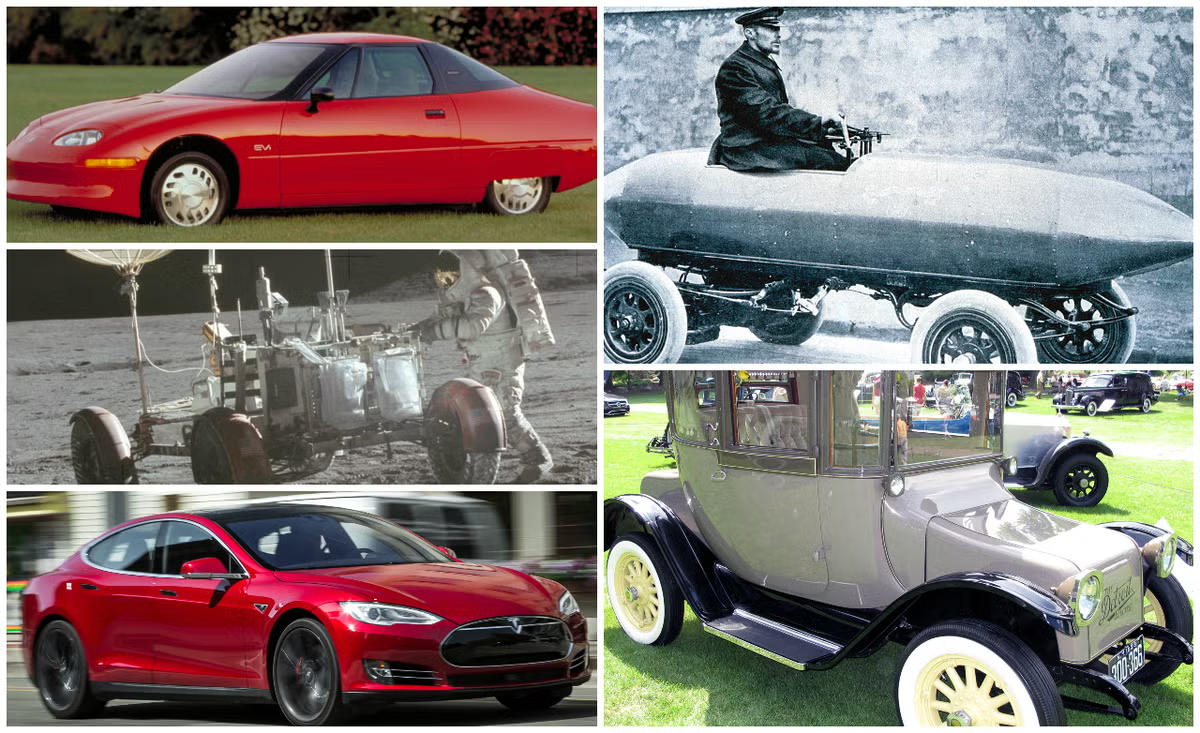The automobile has undergone a dramatic transformation since its inception, evolving from crude, hand-crafted vehicles powered by steam, to highly sophisticated machines powered by gas engines, and, more recently, to the advent of electric vehicles (EVs). This progression has not only revolutionized transportation but also influenced societal structures, economies, and even environmental concerns. In this article, we’ll trace the journey of the automobile from its earliest days to the modern electric car, exploring key innovations, challenges, and the future of the automotive industry.
1. The Birth of the Automobile: From Horse-drawn Carriages to Gas Engines
The history of the automobile begins in the 19th century, during a period when the dominant mode of transport was the horse-drawn carriage. However, inventors around the world were already experimenting with self-powered vehicles. The development of the automobile was shaped by multiple inventors and innovations, including the use of steam engines, internal combustion engines, and electric propulsion.
Steam-Powered Vehicles: The First Attempts at Mechanical Transport
The first vehicles that could be considered precursors to the automobile were steam-powered machines. In 1769, Nicolas-Joseph Cugnot, a French engineer, built the fardier à vapeur, a steam-powered vehicle. Though it was limited in speed and functionality, it laid the groundwork for later designs. Steam-powered vehicles were popular in the early 19th century, with inventors such as Richard Trevithick in England and George Stephenson creating steam-powered locomotives.
Internal Combustion Engine: The Shift Toward Gasoline
The breakthrough that truly revolutionized the automobile came with the development of the internal combustion engine (ICE). In 1876, Nikolaus Otto, a German engineer, created the first commercially successful gasoline-powered engine. This sparked the development of the first gasoline-powered automobiles. Around the same time, Karl Benz in Germany built and patented the Benz Patent-Motorwagen in 1885. Widely considered the first practical automobile, it was powered by an internal combustion engine and marked the beginning of a new era in transportation.
Ford and the Assembly Line
In the early 20th century, Henry Ford took the automobile industry to new heights with the introduction of mass production. In 1908, Ford’s Model T revolutionized car manufacturing by utilizing the assembly line, which drastically reduced production costs and made cars affordable to the general public. Ford’s vision of creating an affordable car for the masses transformed transportation into a mode of accessibility for people of all social classes. By 1927, Ford had sold over 15 million Model Ts, making the automobile a staple of modern life.
2. The Golden Age of the Gasoline-Powered Car
The period between the 1920s and the 1970s marked the golden age of the gasoline-powered automobile. Innovations in design, technology, and consumer demand led to a boom in the automotive industry. The widespread availability of gasoline engines further solidified the internal combustion engine as the dominant power source for vehicles.
Advances in Design and Technology
During this period, the automobile became more than just a mode of transportation. It became a symbol of personal freedom, luxury, and status. Major automakers such as General Motors, Chrysler, Ford, and Chevrolet introduced new vehicle models with more powerful engines, improved safety features, and innovative designs. Cars were now not only faster but also more comfortable, with features like air conditioning, power steering, and automatic transmission.
The 1950s and 1960s saw a surge in muscle cars and sports cars, with models like the Chevrolet Corvette and Ford Mustang becoming icons of American culture. On the global stage, brands like Volkswagen, with its Beetle, and Toyota, with the Corolla, gained popularity for their affordability and reliability.
Environmental and Energy Concerns
Despite the popularity of gasoline-powered vehicles, there was growing concern over air pollution and the environmental impact of the automobile. This concern became more pronounced in the 1960s and 1970s, with the increasing awareness of the harmful effects of automobile emissions on both human health and the environment. The 1973 oil crisis, triggered by an embargo from OPEC (Organization of the Petroleum Exporting Countries), also highlighted the vulnerability of global energy supplies and the reliance on fossil fuels.
In response to these challenges, the automotive industry began exploring alternatives, including cleaner fuels and more fuel-efficient vehicles.
3. The Rise of Electric Vehicles (EVs): A Look Toward Sustainability
Though electric vehicles (EVs) have been around since the late 19th century, their development stagnated in favor of gasoline-powered vehicles. However, in the 21st century, with increasing concerns about climate change, rising fuel prices, and the need for cleaner transportation solutions, electric cars have experienced a resurgence.
Early Electric Cars: A Forgotten Past
Electric cars were actually quite popular in the late 19th and early 20th centuries. In fact, at the time, electric cars were considered cleaner and more efficient than gasoline-powered cars. The Detroit Electric Car Company produced a popular model in the early 1900s. However, as gasoline engines improved in terms of range and speed, and as gasoline became more widely available and cheaper, electric vehicles began to fade from the mainstream market.
Modern Electric Cars: Advancements in Technology
The modern era of electric vehicles began in earnest in the 1990s and early 2000s. The introduction of electric vehicles was driven by advancements in battery technology, environmental awareness, and regulatory changes. The introduction of the Toyota Prius in 1997, a hybrid vehicle combining gasoline and electric power, helped pave the way for future electric vehicle developments.
In 2008, Tesla Motors, founded by Elon Musk, made a major breakthrough with the launch of the Tesla Roadster—the first electric vehicle to offer high performance, a long driving range, and an attractive design. The Tesla Model S, introduced in 2012, revolutionized the electric car industry with its long-range capabilities and cutting-edge technology. Tesla’s success helped make electric vehicles more mainstream, while simultaneously spurring other automakers like Nissan (with the Leaf), Chevrolet (with the Bolt EV), and BMW (with the i3) to invest heavily in electric car technology.
Battery Technology and Charging Infrastructure
A key challenge for the mass adoption of electric cars has been the development of efficient, long-lasting batteries and an extensive charging infrastructure. In recent years, advancements in lithium-ion batteries have significantly improved the range and performance of electric cars, with some models now capable of driving over 300 miles on a single charge. The expansion of fast-charging stations and partnerships with governments and private companies has made charging more convenient and accessible, addressing one of the biggest barriers to widespread adoption.
Additionally, the cost of electric vehicles has gradually decreased as production scales up and battery technology improves, making EVs more affordable for the average consumer.
4. The Future of Automobiles: Autonomous Vehicles and Sustainable Mobility
Looking forward, the future of automobiles lies not only in electric power but also in the integration of autonomous driving technologies, connected vehicles, and sustainable mobility solutions.
Autonomous Vehicles: Driving Without a Driver
The development of self-driving cars, or autonomous vehicles (AVs), is one of the most exciting frontiers in the automotive industry. Companies like Waymo, Tesla, Uber, and Apple are working on developing self-driving technology that can potentially revolutionize transportation by making it safer, more efficient, and accessible to people with disabilities or limited mobility.
Autonomous vehicles rely on a combination of sensors, cameras, artificial intelligence, and machine learning to navigate roads, recognize obstacles, and make decisions without human intervention. While fully autonomous vehicles are not yet widely available, advancements in this area continue to progress rapidly, and we may see self-driving cars become a common sight on roads within the next decade.
Sustainable Mobility: The Role of Shared and Electric Vehicles
In addition to electric cars, the future of transportation also includes a greater emphasis on shared mobility. Ride-sharing services such as Uber, Lyft, and shared electric scooters are already changing the way people think about car ownership. The idea of using a vehicle when needed, rather than owning one, has led to innovations in urban transportation and could reduce traffic congestion and the environmental impact of private car ownership.
The growth of electric scooters and bicycles, especially in urban areas, is also part of a larger movement towards more sustainable and efficient transportation methods. As cities focus on reducing emissions, creating walkable environments, and reducing car dependency, electric and shared vehicles will play an increasingly important role in shaping the future of transportation.
Conclusion
The evolution of the automobile has been nothing short of remarkable, from its humble beginnings as a steam-powered contraption to today’s advanced electric vehicles. As the world faces mounting environmental concerns and the need for sustainable energy solutions, electric cars are poised to play a central role in the future of transportation. The ongoing development of autonomous vehicles and shared mobility solutions will further redefine how we interact with cars, while also enhancing the efficiency and sustainability of our transportation systems.
Looking ahead, the future of the automobile will likely be defined by innovation, sustainability, and smart technology. While gasoline-powered vehicles dominated the 20th century, the 21st century belongs to electric vehicles, and the journey is only beginning.
Key Takeaways:
- The automobile has evolved from steam-powered vehicles to gasoline engines and now electric vehicles.
- Mass production in the early 20th century made cars accessible to the general public, with Henry Ford’s Model T being a milestone.
- Electric vehicles have experienced a resurgence in the 21st century, thanks to advancements in battery technology and growing environmental concerns.
- The future of automobiles includes self-driving cars and a shift towards shared, sustainable transportation models.
- The automotive industry will continue to play a key role in shaping the future of mobility, with innovations focused on sustainability, efficiency, and convenience.

